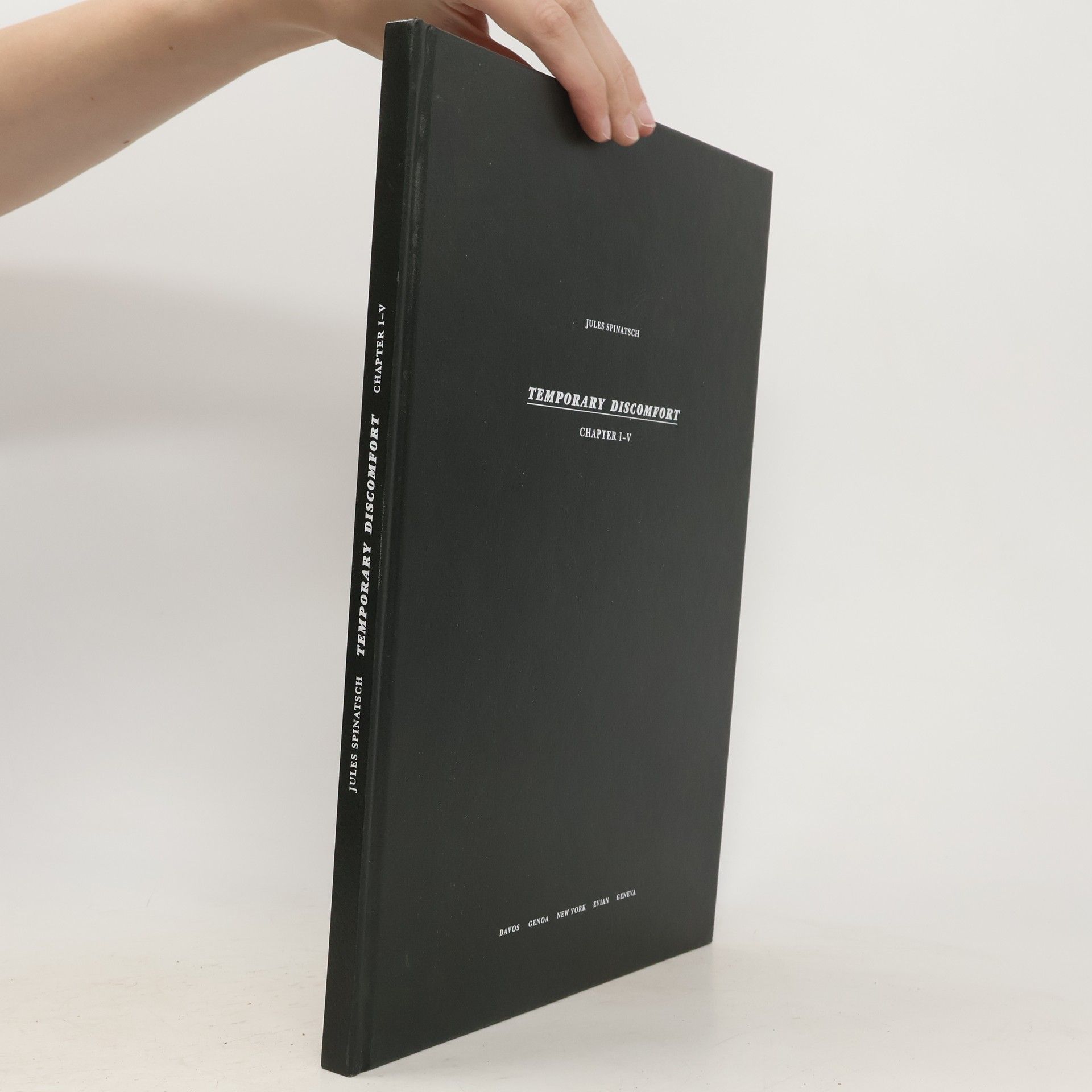Jules Spinatsch's answer to the traditional distinction between applied & free photography can best be described as a cheerful "do-as-you-please" approach. His independent works express his personal artistic beliefs: they are keen-sighted & probingly experimental, capturing atmospheric moments of Spinatsch's immediate surroundings. His images are of an enthralling beauty, & in his close-ups Spinatsch conveys the relevance & charm of minute details. In his series We Will Never Be So Close Again he portrays motorists snoozing at the wheel--images that border on the ethereal. Brand New Animals deals with the artistic depiction of nature, which Spinatsch introduces to the reader as an alternative world.
Jules Spinatsch Livres






Since the 18th century, the Swiss Alps have been considered the epitome of sublime nature. But today the survival of the winter sports industry is in question, as the promises of eternal snow through technology have turned out to be an empty promise. * * In „Snow Management - Complex,“ Jules Spinatsch presents his photographic series documenting ski slopes being prepared at night. Under the glare of cold floodlights, machines noisily turn nature into a tourist experience, with snow cannons at full blast and bulldozers flattening the slopes. The photographs evoke the cold emptiness of stills from a science-fiction film about a barren planet being made habitable. This oeuvre makes manifest the technology, staging, and mediatization that have become the basis of contemporary life. * * The seven chapters in this publication, developed after Spinatsch won the international BMW Prize at Paris Photo for the best first photographic series, also includes the artist's collection of historical postcards of the Alps, and a series of medical still lifes. With contributions by Tobia Bezzola and Walter Keller. * * Spinatsch's work has been shown at The Museum of Modern Art, New York; Tate Modern, London; SFMoMA, San Francisco; Casino Luxembourg; Kunsthaus Zürich; Kunsthaus Zug; Haus der Kunst, Munich; and Fotomuseum Winterthur, among others. * * Published with Codax Publishers, Zurich.
Landscapes of Desire
4th Industrial Art Biennial
Focus of the 4. Industrial Art Biennial is post-industrialisation, as it plays a crucial role in the current period of upheaval in the Antropocene. Christoph Doswald and Paolo Bianchi invited 29 artists and commissioned a large number of site specific projects, addressing issues of economic sustainability, cultural diversity, climate change, etc.. Landscapes of Desire is relying on the power of networking to overcome the boundaries of political and social borders. Artworks are sensory tools and methods to successfully challenge thought-patterns. „We need more artful thinking for a sustainable world“, state the curators. The 4th Industrial Art Biennial is conceived as an experimental laboratory, re-shaping the rich social, economical and cultural topography of Istria. With works by Lara Almarcegui, Cristian Andersen, Charlie Billingham, Vanessa Billy, Werner Feiersinger, Fernanda Figueiredo, Clare Goodwin, Tatjana Gromača, Igor Grubić, Manaf Halbouni, Raphael Hefti, Gregor Hildebrandt, Christian Jankowski, Nikita Kadan, Sandra Knecht, Joseph Kosuth, Lena Lapschina, Sonia Leimer, Olaf Nicolai, Seçkin Pirim, Anna Piva, Marko Pogačnik, Tanja Helena Roscic, Karin Sander, Arcangelo Sassolino, Talaya Schmid, Natalia Stachon, Stefanos Tsivopoulos, Viktor Zahtila A comprehensive catalogue – published with Verlag für moderne Kunst (Vienna) –, is featuring all interventions, documented by reknown photographer Jules Spinatsch . Contributions by Paolo Bianchi, Marie-Janine Calic, Christoph Doswald, Isabella Flego and Tatjana Gromača.
Jules Spinatsch, 1964 in Davos geboren, ist einer der herausragenden Schweizer Fotokünstler der Gegenwart. 2009 realisierte er im Rahmen seiner «Surveillance Panorama Projects» während des Wiener Opernballs ein riesiges Panorama, das aus 10 008 Einzelbildern besteht. Zwei computergesteuerte Kameras nahmen diese vom Einlass der rund 7000 Gäste um 20:32 Uhr bis zum Ende des Balls um 05:17 Uhr auf. Das Sittengemälde aus chronologisch zusammengesetzten Fragmenten des umtriebigen Gesamtgeschehens zeigt eine ganze Reihe fotografischer Genres: Porträts, Stillleben, filmische Szenen und Paparazzi-Schnappschüsse. Aber auch abstrakte und unscharfe Bilder. Das zweibändige Buch «Jules Spinatsch. Vienna MMIX – 10008/7000» stellt diese spektakuläre Gesellschaftsstudie in aussergewöhnlicher Form vor: Band 1 präsentiert alle Bilder in chronologischer Reihenfolge und angeordnet in einem Raster von oben links bis unten rechts; jede Seite entspricht einer Minute des Abends. Band 2 zeigt ausgewählte Einzelbilder. Es sind Situationen von grosser Intensität und Intimität. Spinatschs Projekt 'Vienna MMIX' ist voller faszinierender Details, zugleich festlich, heiter, unheimlich und grausam – und besitzt eine neuartige narrative Form, die zwischen Film und Fotografie liegt. Das Opernball-Panorama führt die Fotografie als Medium der Dokumentation, aber auch Überwachung vor Augen.
„Temporary Discomfort“ enstand von Januar 2001 bis Juni 2003 in Davos und New York während des World Economic Forum WEF, und während der G8 Gipfel in Genua und Evian/Genf. Doch anstelle von Strassenschlachten und Gruppenbildern mit staatsmännischem Händedrücken, zeigt Jules Spinatsch das Warten auf das grosse Ereignis. Es ensteht eine bewusst spekulative Rekonstruktion der Situation.